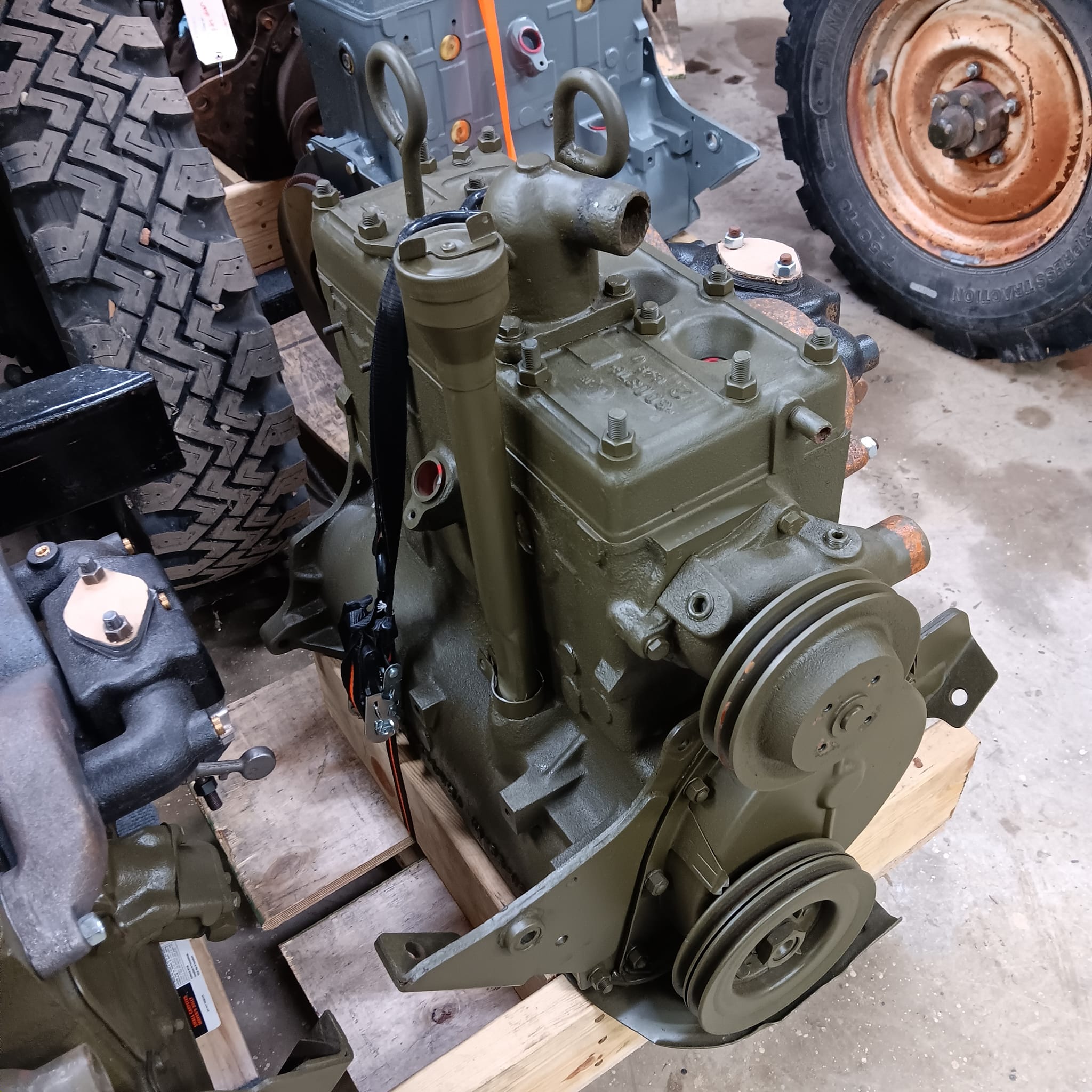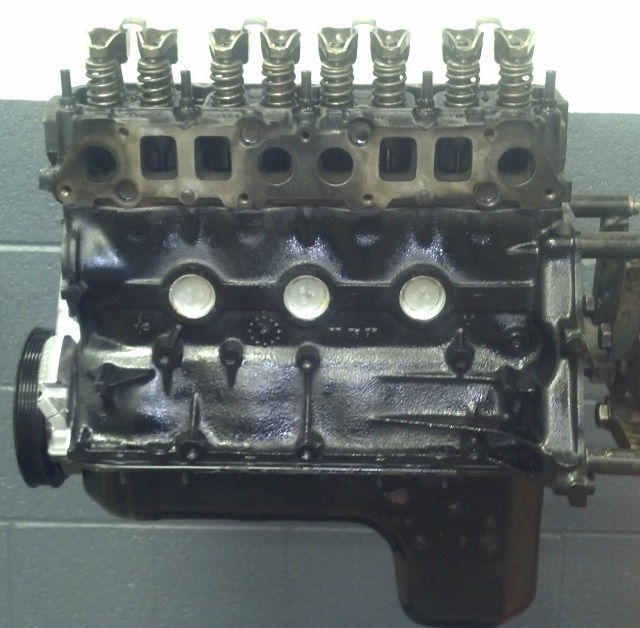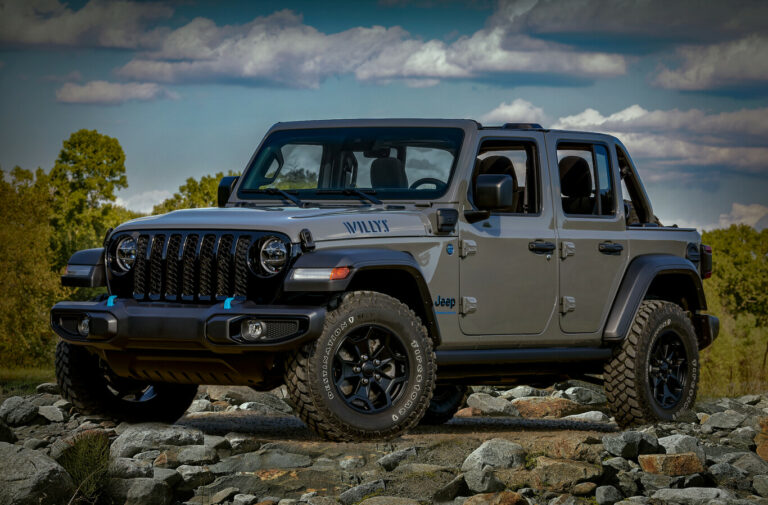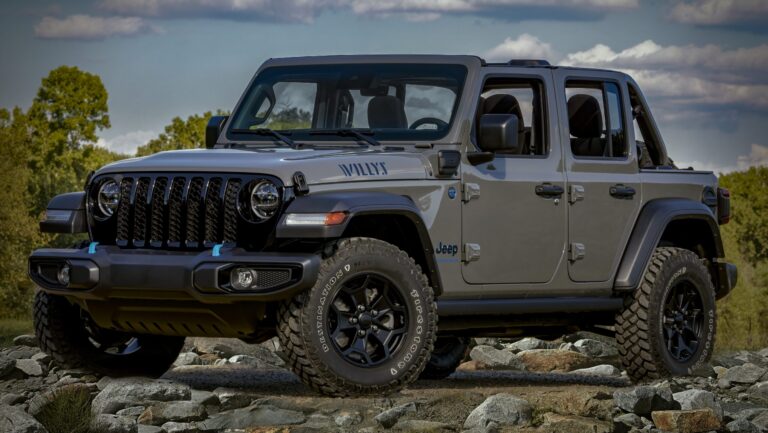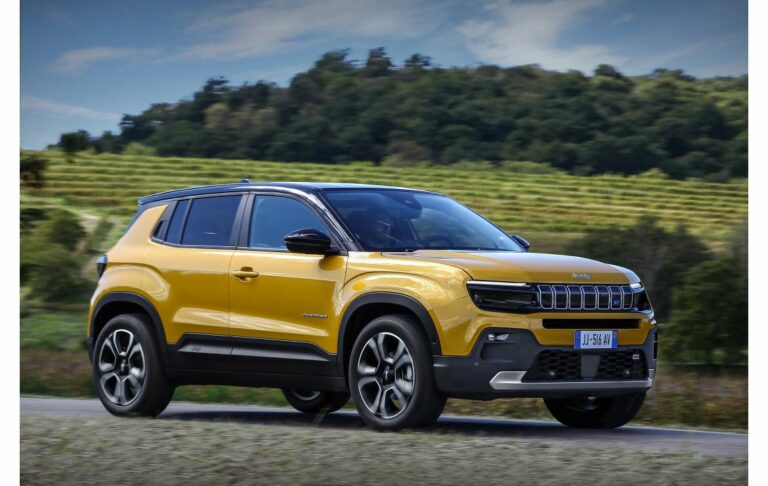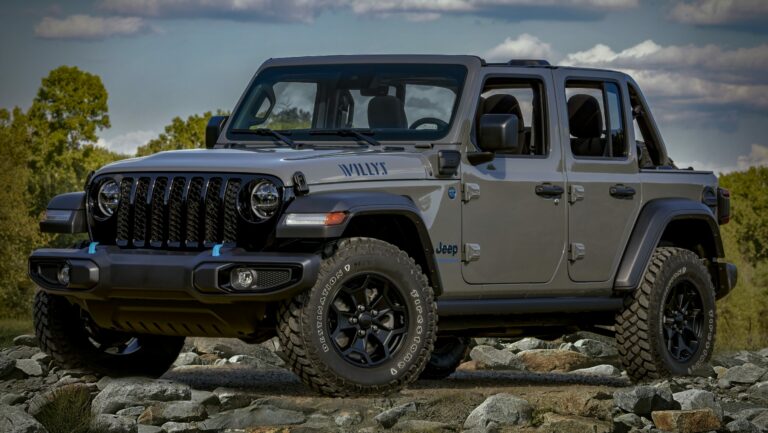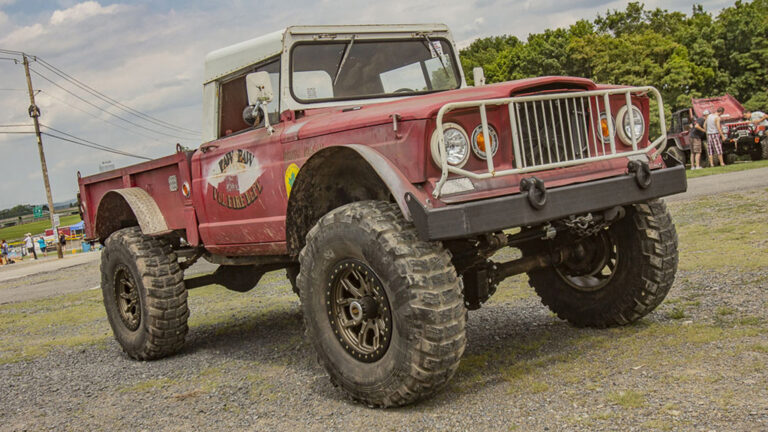2.5 Jeep Motor For Sale: Your Comprehensive Guide to Finding and Buying the Legendary Powerplant
2.5 Jeep Motor For Sale: Your Comprehensive Guide to Finding and Buying the Legendary Powerplant jeeps.truckstrend.com
The 2.5-liter inline-four engine, affectionately known to Jeep enthusiasts as the "2.5L," "AMC 150," or "Chrysler 150," is more than just a motor; it’s the heart of countless iconic Jeeps that have traversed trails and highways for decades. From the rugged YJ Wranglers to the versatile XJ Cherokees and the dependable TJ Wranglers, this modest but mighty powerplant has proven its worth through simplicity, reliability, and surprising capability.
If you’re a Jeep owner facing a blown engine, undertaking a restoration project, or even considering a unique engine swap, the search for a "2.5 Jeep Motor For Sale" is a common quest. This comprehensive guide will navigate you through everything you need to know about this enduring engine, from its history and benefits to where to find one, what to look for, and how to make an informed purchase.
2.5 Jeep Motor For Sale: Your Comprehensive Guide to Finding and Buying the Legendary Powerplant
Understanding the 2.5L Jeep Motor: A Workhorse Defined
Introduced in the mid-1980s, the 2.5-liter (150 cubic inch) four-cylinder engine was primarily designed as a more fuel-efficient and accessible alternative to the larger six-cylinder and V8 options in Jeep’s lineup. It powered a variety of models including:
- Jeep Wrangler YJ (1987-1995): The rectangular headlight era.
- Jeep Wrangler TJ (1997-2006): The coil-sprung successor to the YJ.
- Jeep Cherokee XJ (1984-2001): The hugely popular unibody SUV.
- Jeep Comanche MJ (1986-1992): The Cherokee-based pickup truck.

While its horsepower figures (ranging from 105 HP to 125 HP over its production run) might seem modest compared to modern engines, the 2.5L is renowned for its excellent low-end torque, which is crucial for off-roading. Its cast-iron block and cylinder head, along with a relatively simple design, contribute to its legendary durability and ease of maintenance. It’s a non-interference engine, meaning valves won’t hit pistons if the timing chain fails, adding another layer of peace of mind.
Why Buy a 2.5L Jeep Motor? Beyond Simple Replacement
The reasons for seeking out a 2.5L Jeep motor are varied, extending beyond just replacing a failed original:
- Direct Replacement: This is the most common reason. If your existing 2.5L has thrown a rod, cracked a block, or simply reached the end of its life, sourcing another 2.5L is often the most straightforward and cost-effective solution to get your beloved Jeep back on the road or trail.
- Authentic Restoration: For purists restoring a classic YJ or early XJ, maintaining the original engine configuration is paramount. A period-correct 2.5L ensures the vehicle retains its original character and value.
- Engine Swap for Lighter Vehicles: While less common, the compact size and relatively light weight of the 2.5L make it an attractive option for custom builds or swaps into smaller vehicles where a larger engine might be overkill or too heavy. Its simplicity also makes wiring and integration less complex than modern computerized engines.
- Cost-Effectiveness: Generally, 2.5L motors are more affordable than their 4.0L counterparts or V8 swap options, both in terms of purchase price and potential installation costs.
- Simplicity and Maintainability: For DIY mechanics, the 2.5L is a dream. Its lack of complex electronics and straightforward mechanical design means basic repairs and maintenance are often manageable with standard tools and a good service manual.


Where to Find a 2.5L Jeep Motor for Sale
The market for used and remanufactured 2.5L Jeep engines is robust, but knowing where to look can save you time, money, and potential headaches:
- Salvage Yards/Junkyards: Often the cheapest option, but also the riskiest. You’re buying "as-is" with little to no warranty. Inspection is crucial. Look for yards specializing in Jeeps or older SUVs.
- Online Marketplaces (eBay, Craigslist, Facebook Marketplace): A vast selection from individual sellers to small businesses. Prices vary wildly. Be wary of scams, insist on detailed photos, videos of the engine running (if possible), and consider using secure payment methods. Local pickup is always preferred to avoid shipping complications.
- Specialized Jeep Parts Dealers/Rebuilders: These businesses often source, test, and sometimes rebuild 2.5L engines. They typically offer warranties (e.g., 30-90 days for used, 1-3 years for rebuilt) and can provide more detailed information on the engine’s history. This is often the safest bet for a quality product.
- Automotive Forums and Enthusiast Groups: Jeep-specific forums (e.g., JeepForum, NAXJA) and Facebook groups dedicated to Jeep models are great places to find private sellers within the community. You might find a well-maintained engine from an enthusiast who knows its history.
- Local Mechanics/Repair Shops: Some shops might have pull-out engines from vehicles they’ve upgraded or parted out. It’s worth asking around your local area.
Types of 2.5L Motors Available
When searching, you’ll encounter different terms describing the engine’s completeness and condition:
- Used/Pull-Out: An engine removed from a running or wrecked vehicle. Condition varies from excellent to needing a full rebuild. These are the most affordable but require thorough inspection.
- Remanufactured/Rebuilt: An engine that has been disassembled, cleaned, inspected, and had worn or damaged components replaced with new or reconditioned parts (e.g., new pistons, rings, bearings, camshaft, valves). These often come with a warranty and are a good balance of cost and reliability.
- Crate Engine: While true "new" 2.5L crate engines from Jeep are no longer available, some aftermarket companies might offer newly assembled long or short blocks using all new components. These are the most expensive but offer "like-new" performance and longevity.
- Long Block: Includes the cylinder block, crankshaft, pistons, connecting rods, cylinder head (with valvetrain), camshaft, and timing components. It generally does not include external accessories like the intake manifold, exhaust manifold, alternator, power steering pump, or carburetor/fuel injection system.
- Short Block: Includes only the cylinder block, crankshaft, pistons, and connecting rods. You’ll need to transfer your cylinder head and all external accessories.
- Complete Engine: Typically means a long block with most or all of the necessary external accessories (intake, exhaust, sensors, sometimes even the wiring harness and ECU). This is the easiest for a direct swap but also the most expensive.
Key Considerations Before Buying
Purchasing an engine is a significant investment. Here’s what you need to carefully consider:
- Condition Assessment:
- Compression Test: If possible, perform or request a compression test. Consistent readings across all cylinders are vital. Low or inconsistent numbers indicate internal wear.
- Oil Appearance: Check the oil on the dipstick. Milky oil indicates coolant contamination (head gasket, cracked block/head). Gritty oil suggests bearing issues.
- External Leaks: Look for oil, coolant, or fuel leaks around seals, gaskets, and hoses. While some minor leaks can be fixed, significant ones suggest neglect.
- Mounting Points: Inspect engine mounts and accessory mounting points for cracks or damage.
- Visual Inspection: Look for signs of impact, rust, or major corrosion.
- Mileage (for used): Lower mileage is generally preferred, but a well-maintained high-mileage engine can be better than a neglected low-mileage one. Ask for maintenance records if available.
- Year and Compatibility: While the 2.5L engine block remained largely similar, there were variations in fuel injection systems (Throttle Body Injection vs. Multi-Port Injection), sensor locations, and accessory mounts between different model years and Jeep models. Ensure the engine you buy is compatible with your vehicle’s existing transmission, wiring harness, and ECU.
- Source Reliability and Warranty:
- Reputable Seller: Buy from a seller with good reviews or a long-standing reputation.
- Warranty: Always ask about a warranty. Used engines might come with a short 30-90 day warranty, while rebuilt engines should offer 1-3 years. Understand what the warranty covers and what voids it.
- Return Policy: Know the seller’s return policy in case the engine is not as described.
- Shipping and Logistics: Engines are heavy. Get clear shipping quotes and understand the logistics (e.g., liftgate service, residential delivery fees). Ensure the engine is properly crated or secured for transit. Consider picking it up yourself if feasible.
- Budget Beyond the Purchase Price: Factor in additional costs:
- Ancillary Parts: New gaskets, seals, spark plugs, wires, filters, fluids, sensors, water pump, thermostat, hoses, and belts are highly recommended during an engine swap.
- Installation Costs: If you’re not doing the work yourself, get quotes from reputable mechanics.
- Contingency: Always have a buffer for unexpected issues.
Installation Tips and Post-Purchase Care
Once you have your 2.5L motor, careful installation and break-in are crucial for its longevity:
- Pre-Installation Refresh: Even with a low-mileage used engine, consider replacing common wear items like the rear main seal, oil pan gasket, valve cover gasket, water pump, thermostat, and all external sensors (oil pressure, coolant temp, etc.). This is much easier to do with the engine out of the vehicle.
- Cleanliness: Ensure all mating surfaces are spotless. Use new, quality gaskets.
- Fluid Flush: Flush the cooling system of your Jeep before installing the new engine to remove any contaminants from the old engine.
- Proper Break-In: If you purchased a remanufactured engine, follow the rebuilder’s specific break-in procedure, which typically involves varying RPMs, avoiding prolonged high RPMs or heavy loads, and an early oil change.
- Ongoing Maintenance: Stick to a regular maintenance schedule with quality oil, filters, and coolant. The 2.5L thrives on consistent care.
Challenges and Solutions
- Finding a Good Condition Used Motor: This is the biggest hurdle. Solution: Be patient, inspect thoroughly, ask detailed questions, and consider paying a bit more for a reputable seller or a remanufactured unit with a warranty.
- Compatibility Issues: Solution: Research your specific Jeep model year and the donor engine’s year. Consult forums, service manuals, or experienced mechanics to ensure proper fitment and electrical compatibility.
- Unexpected Costs During Installation: Solution: Budget for 20-30% more than your initial estimate. Have a list of "must-replace" items ready.
- Shipping Damage: Solution: Document everything upon arrival. Take photos of the packaging before opening, and any damage found. File claims immediately with the shipping company and seller.
2.5 Jeep Motor For Sale: Estimated Price Guide
Please note that these are estimated price ranges and can fluctuate significantly based on condition, mileage, completeness (long block vs. complete), seller, warranty, and current market demand. Shipping costs are additional.
| Motor Type/Condition | Completeness | Estimated Price Range (USD) | Key Considerations |
|---|---|---|---|
| Used/Salvage | Long Block | $300 – $800 | "As-is" condition. High risk. No warranty. Needs thorough inspection (compression test, leaks). |
| Complete Pull-Out | $500 – $1,200 | "As-is" with accessories. May or may not run. Risk of unknown internal damage. Best for parts or a full rebuild. | |
| Remanufactured | Long Block | $1,200 – $2,000 | Professionally rebuilt. Often comes with a 1-3 year warranty. Requires transfer of your existing accessories. |
| Complete | $1,800 – $2,800+ | Rebuilt long block with new/reconditioned accessories (intake, exhaust, sensors). Higher cost, easier installation. | |
| New (Aftermarket) | Long Block | $2,500 – $3,500+ | Rare. Built with new components by specialty shops. Longest lifespan, highest cost. |
Factors influencing price: Mileage (for used), included accessories, warranty length, seller reputation, location, shipping costs.
Frequently Asked Questions (FAQ)
Q1: Is the 2.5L Jeep engine reliable?
A1: Yes, the 2.5L is generally considered very reliable. Its simple, robust design and cast-iron construction contribute to its longevity. Regular maintenance is key to its lifespan.
Q2: What vehicles did the 2.5L Jeep motor come in?
A2: It was primarily found in the Jeep Wrangler YJ (1987-1995), Wrangler TJ (1997-2006), Cherokee XJ (1984-2001), and Comanche MJ (1986-1992).
Q3: Can I swap a 2.5L for a 4.0L in my Jeep?
A3: While physically possible, it’s a complex swap requiring significant modifications. You’ll need to change the engine mounts, transmission (often), wiring harness, ECU, exhaust, and potentially the cooling system. It’s not a direct bolt-in and is usually more involved than just replacing a 2.5L with another 2.5L.
Q4: What should I look for when buying a used 2.5L engine?
A4: Perform a compression test if possible, check oil for signs of coolant or metal flakes, inspect for external leaks, look for cracked or damaged mounting points, and ask about the donor vehicle’s history and mileage.
Q5: Do 2.5L engines have common problems?
A5: Like any engine, they have common wear items. The rear main seal can be prone to leaks, and the distributor gear can wear. The exhaust manifold is also known to crack, but these are generally minor issues compared to major engine failures.
Q6: What’s the difference between a long block and a short block?
A6: A short block is just the engine block with the crankshaft, pistons, and connecting rods. A long block includes the short block plus the cylinder head (with valves), camshaft, and timing components. A complete engine adds external accessories like the intake, exhaust, and sensors.
Q7: How much does it cost to install a 2.5L motor?
A7: Installation costs vary widely by region and shop, but you can expect labor costs ranging from $800 to $2000, depending on the complexity of the swap and if additional components need to be replaced during installation.
Conclusion: The Enduring Appeal of the 2.5L Jeep Motor
The 2.5-liter Jeep motor may not be the most powerful engine ever built, but its legacy is firmly cemented in the hearts of Jeep enthusiasts. Its simplicity, reliability, and surprising off-road capability make it an ideal choice for direct replacements, authentic restorations, and specific custom builds.
By understanding where to look, what to look for, and the various options available, you can confidently navigate the market for a "2.5 Jeep Motor For Sale." Whether you’re bringing an old trail rig back to life or ensuring your daily driver continues its dependable service, investing in a well-chosen 2.5L will keep your Jeep rolling for many more adventures to come. With careful consideration and a bit of due diligence, you can find the perfect heart for your beloved Jeep.
